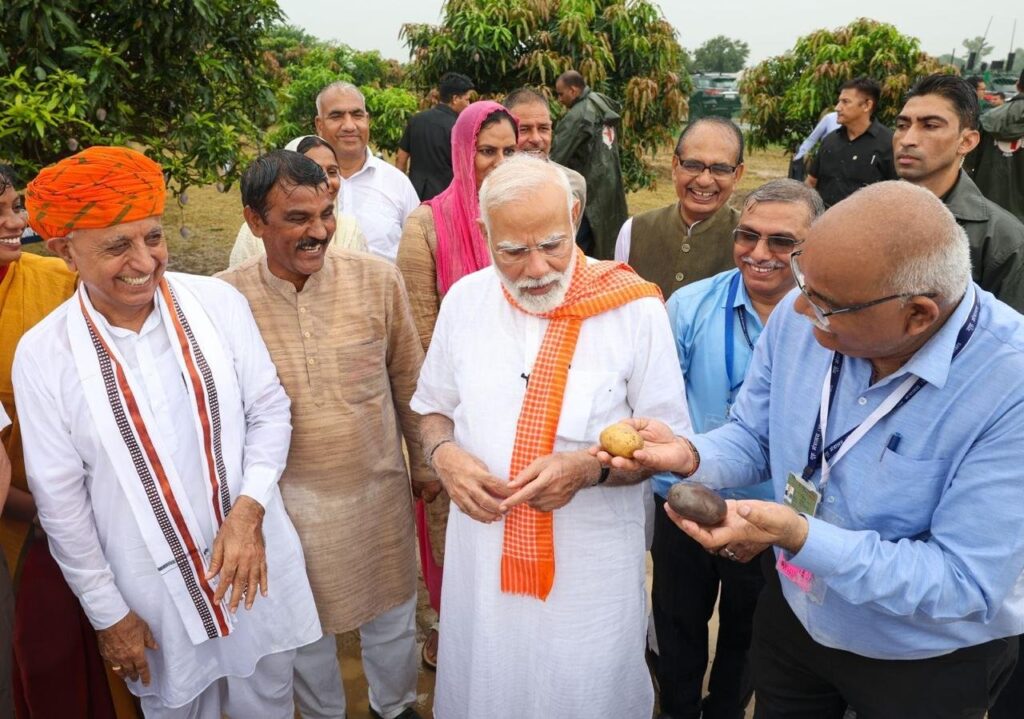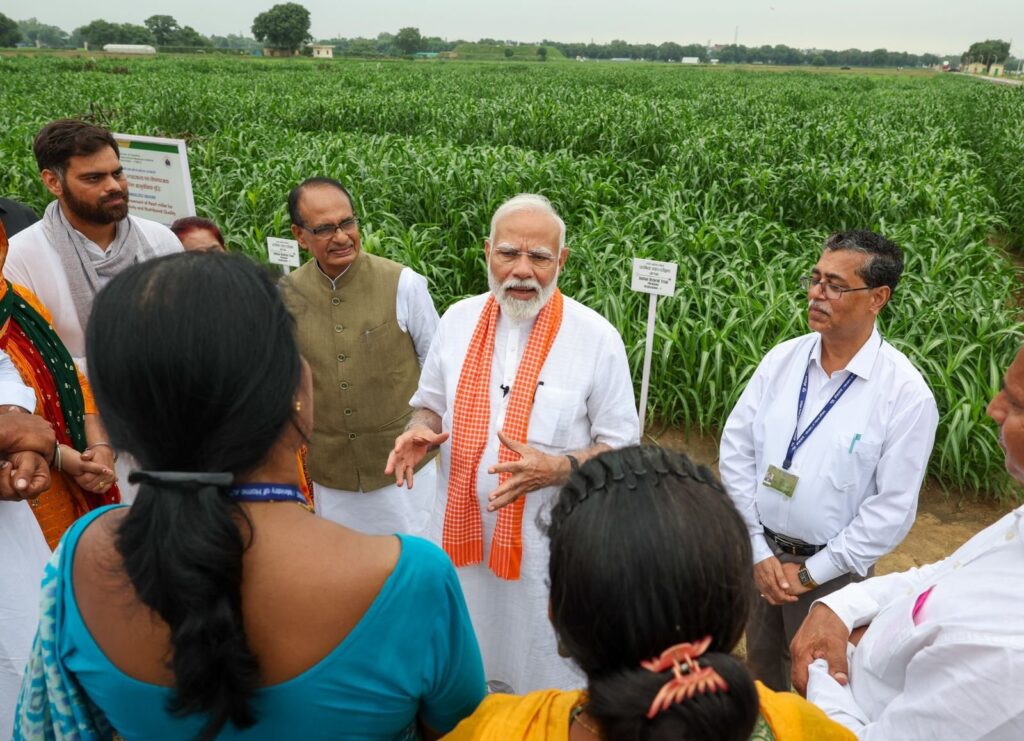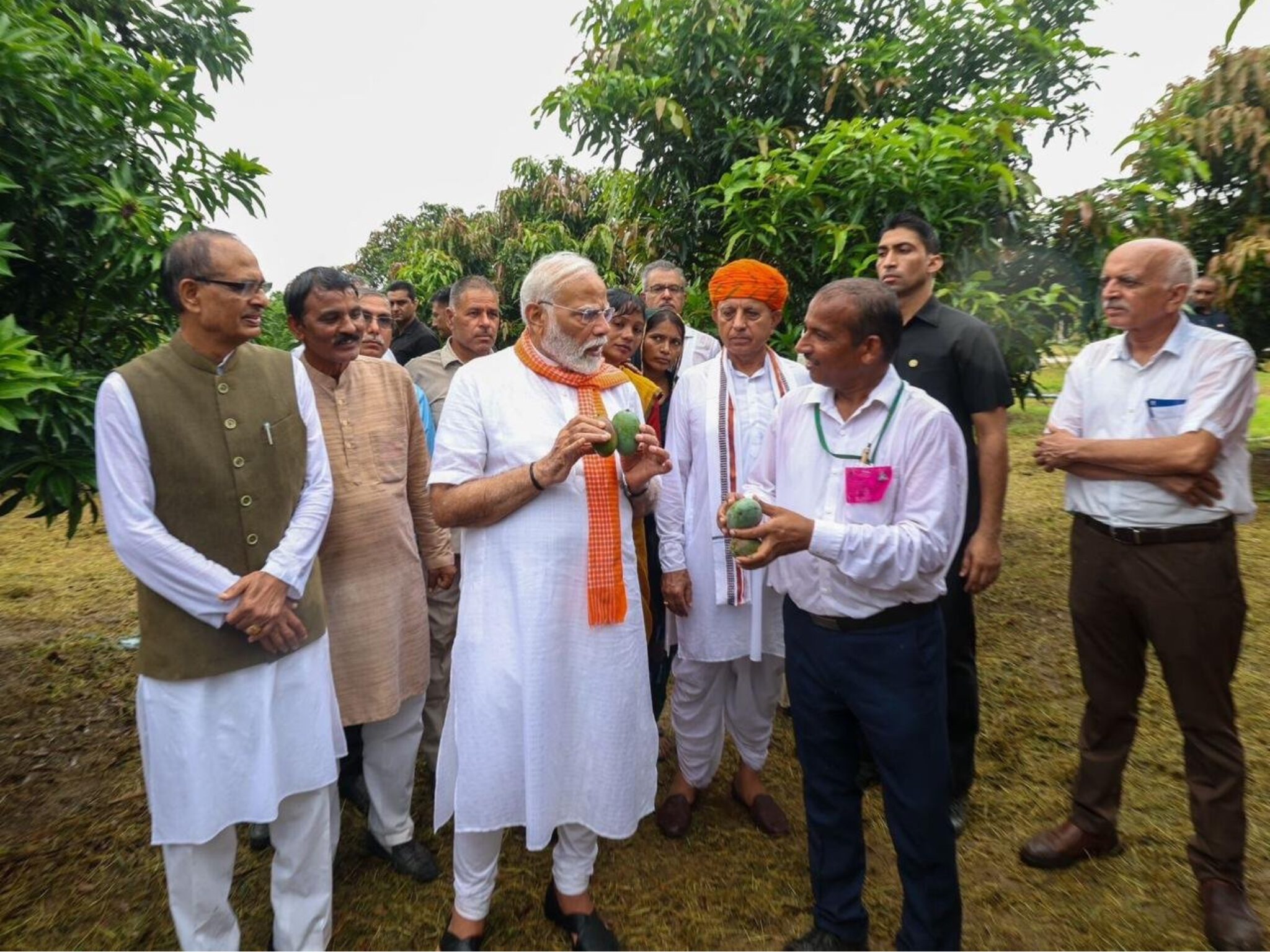India Releases 109 High-Yielding, Resilient Crop Varieties for Climate-Vulnerable Farmers
4 Mins Read
The Indian government has introduced over 100 high-yielding, climate-resilient varieties of crops for farmers, a group among the country’s most vulnerable to global warming.
India has unveiled 109 future-facing varieties of crops for an agricultural sector ravaged by climate change and extreme weather events.
The new biofortified varieties – spanning a total of 61 field and horticultural crops – are said to be high in yield and resilient to the effects of climate change. They were introduced at the Indian Agricultural Research Institute (commonly known as the Pusa Institute) in New Delhi, delivering on a promise made in the finance ministry’s 2024-25 budget last month.
Prime minister Narendra Modi – who has long had a tetchy relationship with India’s farmers – released seeds and planting material at three sites in the demonstration fields of the Indian Council of Agricultural Research (ICAR), which funds the Pusa Institute.
In an address to scientists, the recently reelected head of state said experts from the ICAR, agricultural universities and Krishi Vigyan Kendras (local farm science centres) should “proactively interact with farmers and inform them about new varieties and technology every month”.
Climate-resilient crops now need to be produced on larger scale

India, the world’s most populous nation, is responsible for 10% of the global agricultural output. The sector contributes to 15% of its GDP, and employs between 43% and 65% of its population. It is the world’s leading producer of pulses, and second-largest producer of rice, wheat, sugarcane, groundnuts, vegetables, fruits and cotton.
The new seeds are variants of 34 field crops and 27 horticultural crops. The former includes various cereals like millets, forage crops, oilseeds, pulses, sugarcane, cotton and fibre, while the latter involves fruits, vegetables, plantation crops, tuber crops, spices, flowers and medicinal crops.
Modi met with a group of farmers and told them that the new varieties would benefit them immensely, since they would cut expenditures, add crop value and diversity, have a positive impact on the environment, and withstand the impacts of climate change.
The ICAR scientists who developed the varieties said their brief was to bring underutilised crops to the mainstream. Among the new innovations were rice that can withstand submergence or flooding, climate-resilient guava, a green gram variety customised for the National Capital Region surrounding Delhi, heat-tolerant durum wheat, high-calcium finger millet, and a superior mango variety, according to local media.
Modi outlined the need for higher-nutrition foods in India, and suggested that people have begun demanding and consuming more organic foods – the country expanded its organic farmland by 145% between 2012 and 2022.
Agriculture minister Shivraj Singh Chouhan highlighted the central government’s “lab to land” approach in a way that “science reaches the farmer directly”. He added that the seeds of the new varieties will now need to be produced on a large scale, and will reach farmers in three years.
Why India’s agriculture needs more action on climate change

Climate change has dealt devastating blows to India’s agriculture sector. The country is the largest consumer of groundwater, since farmers depend on a heavily stressed water supply for irrigation. And 65% of its farmland depends on rainwater, but inconsistent rainfall and increasing temperatures are decimating crops.
While it is the second-largest wheat producer, every 1°C increase in temperature brings about a decline in wheat production by four to five million tonnes, according to ICAR. Temperatures have steadily grown in India over the last few decades, with extreme heatwaves sweeping through different parts in recent years. This year has already seen an area in New Delhi record the country’s hottest temperature ever, reaching 52.3°C, while some of its deadliest floods have occurred in the last decade or so.
So it shouldn’t come as a surprise that the nation has lost nearly 70 million hectares of crops due to excessive rainfall or drought between 2015 and 2021. Agriculture is the sector most vulnerable to the climate crisis in India, and was among several industries that suffered a combined $159B in economic losses in 2021 due to lost working hours from extreme weather events.
The Modi government’s rollout of the climate-resilient crop varieties would be welcomed by farmers, and would represent a rare win for the prime minister among this group. During Covid-19, hundreds of thousands of farmers protested against Modi’s move to open up more private investment in agriculture, which they believed would make them vulnerable to low prices.
Farmers were already facing crippling debt – since Modi first took office in 2014, estimates suggest over 100,000 farmers have taken their lives. The sector’s contribution to the GDP has fallen from 35% in 1990-91 to less than a sixth now, and 82% of it is made up of small or marginal farmers.
With climate change exacerbating the financial strains on Indian farmers, the mood has continued to sour. It was touted as an important factor in the surprising national election results this year, where Modi’s party had to rely on a coalition to form a government, following two terms built upon landslide victories.
That said, more needs to be done. Agriculture accounts for 15% of India’s emissions, but two-thirds of this comes from livestock farming. Given it is the leading producer of milk globally, a shift towards plant-based analogues would drastically reduce the country’s climate footprint – if the milk lobby allows, that is.



